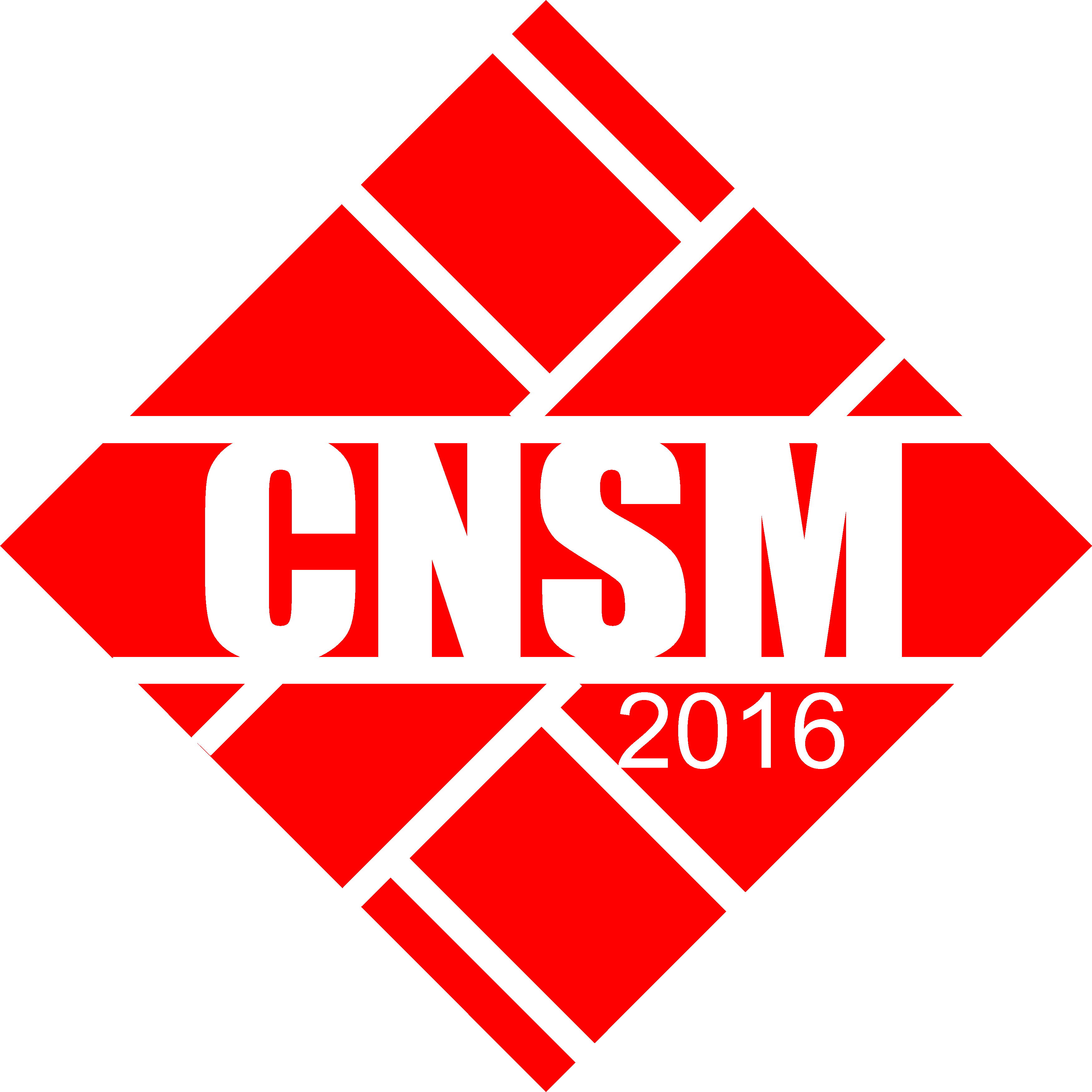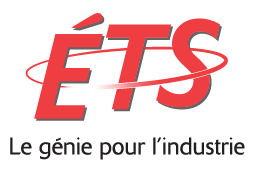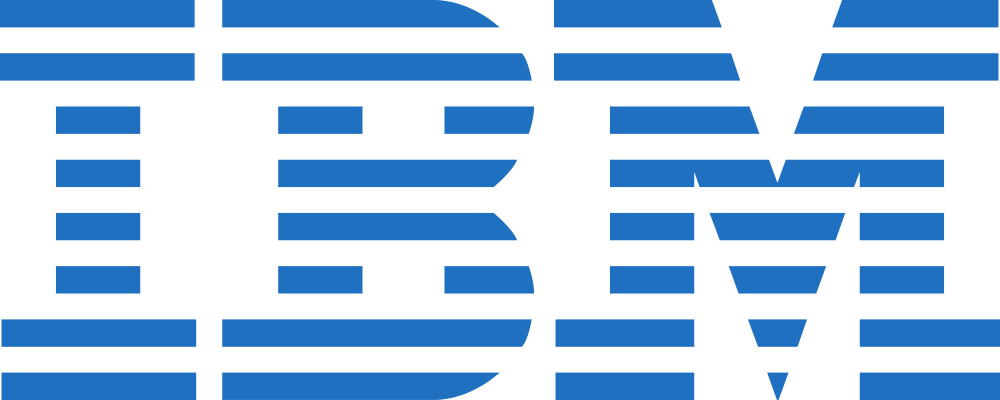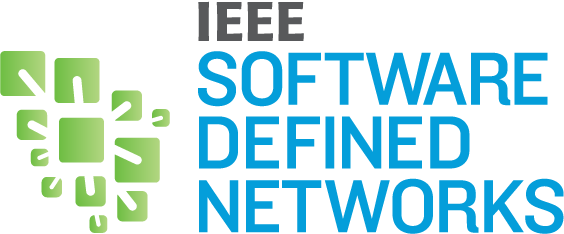|
|
Program at a Glance
Mini-Conference KeynoteMini-Conference Session 1
- Reliability-Aware Service Provisioning in NFV-enabled Enterprise Datacenter Networks
Long Qu (Ningbo University, China); Chadi Assi (Concordia University, Canada); Khaled Bashir Shaban (Qatar University & College of Engineering, Qatar); Maurice J. Khabbaz (American University of Beirut, Lebanon & Concordia University, Canada) - CoFence: A Collaborative DDoS Defence Using Network Function Virtualization
Bahman Rashidi (Virginia Commonwealth University, USA); Carol J Fung (Concordia University, Canada) - Emulating an Infrastructure with EASE
Arup Raton Roy (University of Waterloo, Canada); Shihabur R. Chowdhury (Apple, USA); Md. Faizul Bari, Reaz Ahmed and Raouf Boutaba (University of Waterloo, Canada)
Mini-Conference Session 2
- The Curious Case of Parallel Connections in HTTP/2
Jawad Manzoor (Université Catholique de Louvain, Belgium); Idilio Drago (University of Turin, Italy); Ramin Sadre (Université Catholique de Louvain, Belgium) - Measuring Web Similarity from Dual-stacked Hosts
Steffie Jacob Eravuchira (SamKnows, United Kingdom (Great Britain)); Vaibhav Bajpai (Hasso Plattner Institute, Germany & University of Potsdam, Germany); Jürgen Schönwälder (Constructor University Bremen, Germany); Sam Crawford (SamKnows, United Kingdom (Great Britain)) - Detecting and Diagnosing Performance Impact of Smartphone Software Upgrades
Ajay A Mahimkar (AT&T Labs, USA) - NEMEA: A Framework for Network Traffic Analysis
Tomas Cejka (CESNET & Czech Technical University in Prague, FIT, Czech Republic); Václav Bartoš (CESNET); Marek Svepes and Zdenek Rosa (CESNET, Czech Republic); Hana Kubatova (CTU in Prague, Czech Republic)
Mini-Conference Session 3Keynote Session 1Technical Session 1
- A Connectionist Approach to Dynamic Resource Management for Virtualised Network Functions
Rashid Mijumbi (Nokia, Ireland); Sidhant Hasija, Steven Davy, Alan Davy and Brendan Jennings (Waterford Institute of Technology, Ireland); Raouf Boutaba (University of Waterloo, Canada) - Boost Online Virtual Network Embedding: Using Neural Networks for Admission Control
Andreas Blenk and Patrick Krämer (Technische Universität München, Germany); Patrick van der Smagt (TUM, Germany); Wolfgang Kellerer (Technische Universität München, Germany) - ReNoVatE: Recovery from Node Failure in Virtual Network Embedding
Nashid Shahriar (University of Regina, Canada); Reaz Ahmed and Aimal Khan (University of Waterloo, Canada); Shihabur R. Chowdhury (Apple, USA); Raouf Boutaba (University of Waterloo, Canada); Jeebak Mitra (Dell Technologies, Canada)
Technical Session 2
- SWAN: Base-Band Units Placement over Reconfigurable Wireless Front-Hauls
Roberto Riggio (Università Politecnica Delle Marche, Italy); Davit Harutyunyan (Robert Bosch GmbH, Germany); Abbas Bradai (University of Côte d'Azur, France); Slawomir Kuklinski (Warsaw University of Technology, Poland); Toufik Ahmed (CNRS-LaBRI UMR 5800, University Bordeaux, Bordeaux-INP, France) - Quantifying the Service Performance Impact of Self-Organizing Network Actions
Swati Roy (Princeton University, USA); David Applegate (Google Inc., USA); Zihui Ge (AT&T Labs - Research, USA); Ajay A Mahimkar (AT&T Labs, USA); Shomik Pathak (AT&T Mobility Services, USA); Sarat Puthenpura (AT&T Labs Research, USA) - A Steiner Tree-Based Verification Approach for Handling Topology Changes in Self-Organizing Networks
Tsvetko Tsvetkov (Technical University of Munich, Germany); Janne Ali-Tolppa (Nokia, Finland); Henning Sanneck (Apple, Germany); Georg Carle (Technische Universität München, Germany)
Poster Session 1
- Optimizing the RoI of Cyber Risk Mitigation
Mohammed Noraden Alsaleh (Eastern Michigan University, USA); Ghaith Husari (University of North Carolina at Charlotte, USA); Ehab Al-Shaer (Carnegie Mellon University, USA) - Diagnosis Cloud: Sharing Knowledge Across Cellular Networks
Gabriela F. Ciocarlie, Cherita Corbett, Eric Yeh and Christopher Connolly (SRI International, USA); Henning Sanneck (Apple, Germany); Muhammad Naseer-ul-islam (Nokai Bell Labs, Germany); Borislava Gajic (Nokia Bell Labs, Germany); Szabolcs Nováczki (Nokia Siemens Networks, Hungary); Kimmo Hatonen (Nokia, Finland) - Fluid Capacity for Energy Saving Management in Multi-Layer Ultra-Dense 4G/5G Cellular Networks
Stephen S. Mwanje (Nokia Bell Labs, Germany); Janne Ali-Tolppa (Nokia, Finland) - On the Impact of Advance Reservations for Energy-Aware Provisioning of Bare-Metal Cloud Resources
Marcos Dias de Assuncao (ETS Montreal, Canada); Laurent Lefevre (INRIA, France); François Rossigneux (ENS-Lyon, France) - Graph-based diagnosis in Software-Defined Infrastructure
Joseph Wahba (University of Toronto, Canada); Hazem M. Soliman (Rank Software Inc., Canada); Hadi Bannazadeh and Alberto Leon-Garcia (University of Toronto, Canada) - Identifying Resources for Cloud Garbage Collection
Zhiming Shen (Cornell University, USA); Christopher C. Young, Sai Zeng, Karin Murthy and Kun Bai (IBM T. J. Watson Research Center, USA) - Energy-aware quality adaptation for mobile video streaming
Stefano Petrangeli (Ghent University & iMinds, Belgium); Patrick Van Staey (Ghent University - iMinds, Belgium); Maxim Claeys (University of Antwerp - imec, Belgium); Tim Wauters (Ghent University - Imec, Belgium); Filip De Turck (Ghent University - imec, Belgium) - On the Adoption of the Elliptic Curve Digital Signature Algorithm (ECDSA) in DNSSEC
Roland van Rijswijk-Deij (University of Twente & NLnet Labs, The Netherlands); Mattijs Jonker (University of Twente, The Netherlands); Anna Sperotto (Twente University, The Netherlands) - Inferring Smartphone Service Quality using Tensor Methods
Vaneet Aggarwal (Purdue University, USA); Ajay A Mahimkar (AT&T Labs, USA); Hongyao Ma (Harvard University, USA); Zemin Zhang and Shuchin Aeron (Tufts University, USA); Walter Willinger (NIKSUN, USA) - Understanding the Role of Change in Incident Prevention
Sinem Guven and Karin Murthy (IBM T. J. Watson Research Center, USA)
Keynote Session 2Technical Session 3Technical Session 4
- Dynamic Server Selection Strategy for Multi-server HTTP Adaptive Streaming Services
Niels Bouten (Ghent University - iMinds, Belgium); Maxim Claeys (University of Antwerp - imec, Belgium); Bert Van Poecke (Ghent University - iMinds, Belgium); Steven Latré (University of Antwerp - imec, Belgium); Filip De Turck (Ghent University - imec, Belgium) - Virtual Machine Priority Adaption to Enforce Fairness Among Cloud Users
Patrick Poullie and Stephan Mannhart (University of Zurich, Switzerland); Burkhard Stiller (University of Zürich, Switzerland) - Deadline-aware TCP Congestion Control for Video Streaming Services
Maxim Claeys (University of Antwerp - imec, Belgium); Niels Bouten (Ghent University - iMinds, Belgium); Danny De De Vleeschauwer, Koen De Schepper and Werner Van Leekwijck (Nokia, Belgium); Steven Latré (University of Antwerp - imec, Belgium); Filip De Turck (Ghent University - imec, Belgium)
Poster Session 2
- Let's Adapt to Network Change: Towards Energy Saving with Rate Adaptation in SDN
Samy Zemmouri (ETS, Canada); Shahin Vakilinia (Synchromedia, Canada); Mohamed Cheriet (Ecole de technologie superieure (University of Quebec), Canada) - A Traffic Visualization Framework for Monitoring Large-scale Inter- DataCenter Network
Meryem Elbaham (École de Technologie Supérieure - Quebec University, Canada); Kim Khoa Nguyen (École de Technologie Supérieure, Canada); Mohamed Cheriet (Ecole de technologie superieure (University of Quebec), Canada) - Online Characterization of Buggy Applications Running on the Cloud
Arnamoy Bhattacharyya (University if Toronto, Canada); Harsh Singh, Seyed Ali Jokar Jandaghi and Cristiana Amza (University of Toronto, Canada) - Measuring Auto Switch Between Wi-Fi and Mobile Data Networks in an Urban Area
Jonghwan Hyun (POSTECH, Korea (South)); Youngjoon Won (Hanyang University, Korea (South)); David Nahm (UC Berkeley, USA); James Won-Ki Hong (POSTECH, Korea (South)) - Building a Feedback Loop to Capture Evidence of Network Incidents
Zdenek Rosa (CESNET, Czech Republic); Tomas Cejka (CESNET & Czech Technical University in Prague, FIT, Czech Republic); Martin Zadnik and Viktor Puš (CESNET, Czech Republic) - Behavioral Clustering of Non-Stationary IP Flow Record Data
Christian Hammerschmidt (University of Luxembourg, Luxembourg); Samuel Marchal (VTT Technical Research Centre of Finland, Finland); Radu State (University of Luxembourg, Luxembourg); Sicco Verwer (Delft University of Technology, The Netherlands) - Applying Big Data Technologies to Manage QoS in an SDN
Shashwat Jain, Manish Khandelwal and Ashutosh Katkar (RIT, USA); Joseph Nygate (Rochester Institute of Technology, USA) - BuDDI: Bug Detection, Debugging, and Isolation Middlebox for Software-Defined Network Controllers
Rohit Abhishek (AT&T, USA); Shuai Zhao (INTEL, USA); Sejun Song (Missouri University of Science and Technology, USA); Baek-Young Becky Choi (Missouri University of Science and Technology (Missouri S&T), USA); Haihong (Henry) Zhu (Huawei Technologies Co., USA); Deep Medhi (US National Science Foundation, USA)
Keynote Session 3Technical Session 5
- Analytic Model for SDN Controller Traffic and Switch Table Occupancy
Christopher Metter (University of Würzburg, Germany); Michael Seufert (University of Augsburg, Germany); Florian Wamser (Lucerne University of Applied Sciences and Arts, Switzerland); Thomas Zinner (NTNU, Norway); Phuoc Tran-Gia (University of Wuerzburg, Germany) - Enabling Efficient Multi-Layer Repair in Elastic Optical Networks by Gradually Superimposing SDN
Jeremias Blendin (Barefoot Networks & Intel Corporation, USA); Daniel Herrmann (TU Darmstadt, Germany); Matthias Wichtlhuber (DE-CIX, Germany); Matthias Gunkel (Deutsche Telekom Technik GmbH & Fixed Mobile Engineering Deutschland, Germany); Felix Wissel (Deutsche Telekom Technik, Germany); David Hausheer (OVGU Magdeburg, Germany)
Technical Session 6
- Detecting Version Number Attacks in RPL-based Networks using a Distributed Monitoring Architecture
Anthéa Mayzaud (Inria Nancy Grand-Est, Université de Lorraine, France); Remi Badonnel (TELECOM Nancy - LORIA/INRIA & RESIST Research Team, France); Isabelle Chrisment (LORIA-TELECOM Nancy, Université de Lorraine, France) - CAAMP: Completely Automated DDoS Attack Mitigation Platform in Hybrid Clouds
Nasim Beigi, Cornel Barna and Mark Shtern (York University, Canada); Hamzeh Khazaei (University of Alberta, Canada); Marin Litoiu (York University, Canada) - Booter Blacklist: Unveiling DDoS-for-hire Websites
José Jair Santanna (Northwave Security, The Netherlands & University of Twente, The Netherlands); Ricardo de O. Schmidt (University of Twente, The Netherlands); Daphne Tuncer (Ecole nationale des ponts et chaussees, Institut Polytechnique de Paris, France); Joey de Vries (University of Twente, The Netherlands); Lisandro Z Granville (Federal University of Rio Grande do Sul, Brazil); Aiko Pras (University of Twente, The Netherlands)
Distinguished Experts Panel |












